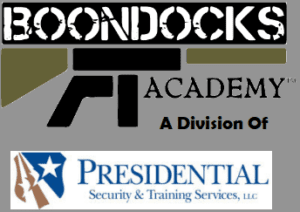Terminology Tactics
Recently I wrapped up a firearms instructor certification course, and as usual, it was a mixture of pro 2nd amendment civilians, law enforcement and military candidates. All of them wanted to be better equipped to help educate others about firearms, and each of them brought their own style, experiences and background with them. During the course, I try to emphasize future students will likely come from an even wider variety of backgrounds. Some may have been raised around firearms, other may be less pro gun, and only signed up because of a traumatic experience or scare. As the instructor, they may have to balance a classroom where some students feel like the gun is the answer to all problems, and others are not sure they could even point a gun at another person, much less pull the trigger. Therefore, the terminology we use to communicate the topics in the classroom and on the range can make a huge difference.
What is a Weapon?
For example, it is very common for those with a military or law enforcement background to refer to the gun as a “weapon”. Pick up your weapon, load your weapon, FIRE your weapon, clear your weapon, etc. While there is technically nothing wrong with this terminology, it can sound a little intimidating to some, and provides additional ammunition to anti gun folks who see guns as nothing more than an object used to kill people. Instead of repeatedly using the term weapon, I encourage them to use handgun, long gun, pistol or rifle. This may sound insignificant, but the shift can make some students more comfortable in the class and help change the way others view firearms. You may think I am splitting hairs here and shrug off this “touchy-feely” approach, but ask yourself this question. Why are guns, the only item used to classify as a weapon, before it is used to hurt someone? The definition of weapon is “a thing designed or used for inflicting bodily harm or physical damage.” By that definition, should we refer to a sword, a blade or club as a weapon in everyday conversations? If I go to a steakhouse and request a knife, should I ask for a “steak weapon”? No, I ask for a steak knife. Now if you try and steal my steak while we are at dinner, then that knife might indeed become a weapon. Yes, it may be a small shift, but if it can help ease the concerns of those reluctantly needing to learn more about firearms, then I think it is worth it. It certainly can’t hurt.
Additional Talking Points
In talks with others, especially anti-gun folks, I think it is also important that we use the correct terminology when referring to firearms parts, actions and accessories. For example, no gun holds bullets in a clip! Ammunition or cartridges are loaded into a magazine and when fired, a bullet exits the muzzle. A clip is a device that is used to store multiple rounds of ammunition together as a unit for insertion into the magazine or cylinder of a firearm. Like the term weapon above, the term “Assault Rifle” and “Weapons of War” are political terms designed to sway public opinion, against the AR-15. The AR-15 was originally developed by Armalite in 1956 and is simply a semi automatic rifle which is much less powerful and function much the same way as hundreds of other rifle models used for hunting all over the world. Fully automatic rifles like those used by the military have been heavily regulated since the National Firearms Act of 1934 and you can’t simply walk into Walmart or a gun store to buy one.
These tactics may seem inconsequential, but they can be a small part of helping to save our 2nd amendment from future infringements. I also encourage you take a few minutes to read the Intellectual Ammunition article written by my friend and fellow 2nd Amendment advocate Tom Gresham of Gun Talk

